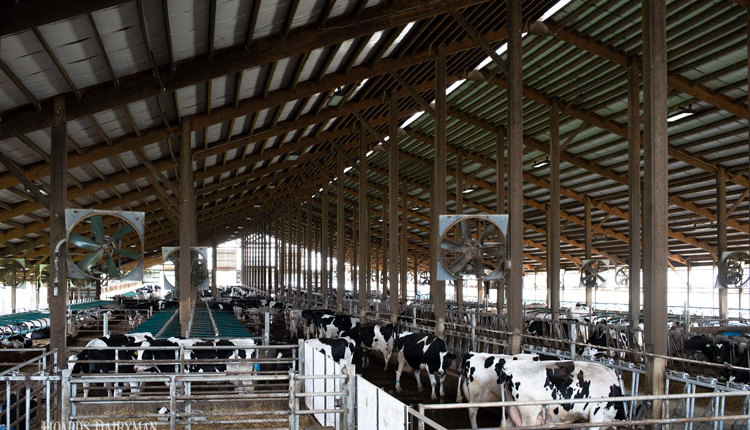
Most often when you hear the phrase “it takes a village,” someone is referring to raising children, but isn’t the same true for any cow show? Preparing cows for a show is a year-round affair, and at the show, these elite cattle require around the clock care. That makes the night man or woman an essential part of the village.
What do nights entail?
“Nightlining” consists of an approximate 12-hour shift monitoring cows, keeping the pack clean, feeding when necessary, and any other work that may need to take place, such as preparing cows that will show the next day. According to Nicholas Achen of Kansas, “A dairy runs 24 hours each day. A night person is kind of like a night herdsman. We’re important to keep things going.”
While most night workers tend to accomplish many similar tasks, each person takes something unique away from each show. Ryan Allen of Maryland says, “These trips to the show to work nights are amazing and a great opportunity to learn. I’ve learned so much over the past couple of years being able to do this.”
Many young people work the night shift because it’s a short-term paying job that helps them create a network. It also teaches them responsibility and work ethic.
That hard work extends beyond the barn as several of the nightline workers are also students. “I obligate myself to keep up with my schoolwork and complete it during the day, either before or after I get to sleep, because I know what it will mean for my future,” said Allen.
Wisconsinite Hannah Ullom echoed those thoughts. “I do my homework at night when the cows are down, but different methods work for different people,” she addressed.
Sandra Krone of Pennsylvania remembers missing almost three weeks of class the fall of her senior year of college to work cow shows. “Work ahead, remember time changes, but always keep up with school,” she encouraged.
Connections for the future
For many, nightlining is a segue into another league of the show world. These jobs enable young people to construct a network, learn from the best in the industry, and make a name for themselves.
“I yearn to work with good genetics, and I see these cows when there is almost no one here at the biggest show in the world,” Achen remarked. “As a Milking Shorthorn guy, nights have been an eye-opener because of the different breeds I am able to work with. Even now, I can say that I have gotten to know more people and breeders in the Jersey community.”
Along with exposure to different breeds, nightlining opens the door to new travel opportunities and chances to work at other shows.
“I learn something new every single show,” stated Krone. “Nights also allowed me my first step on Canadian soil when I got work at the Royal Agricultural Winter Fair.”
“I see both sides of the show spectrum by doing nights. I learn the intricacies of different breeds, people, and the proper ways to care for animals,” Taylor Pool of Pennsylvania elaborated. “The chance to do this means a lot. It is an incredible experience to be at World Dairy Expo, see amazing cattle, and create tremendous connections.”
What it means to them
“Make sure you thank your night man,” said judge Keith Topp during his grand champion remarks of the 2019 International Milking Shorthorn Show. Mentions such as these speak volumes to how crucial the work is of anyone doing nights at a show.
Often, certain night people are sought after by the same farms year after year because of their reputation and work ethic. For Krone, she takes great pride in regularly working for some of the same farms.
“I never thought I would be entrusted with cows of this quality,” Krone said. “I take this so seriously, and I want to do my best for every showstring I work with.”
Night people are part of the hours it takes to get an animal ready before entering the showring. “It gives me a purpose to watch a heifer fill up during the early hours before its class starts. I am part of the preparation,” said Ullom.
Frequently, it’s young people in their late teens or early 20s working the night shift, but that isn’t the case for everyone. In his 60s, Gary Cherrier of Vermont stated, “I love these trips to do nights because I help get good cattle ready. I love the people, and I love doing what I’m doing.”
The 2019 show was Cherrier’s fourth trip to World Dairy Expo, and he explained that he loved being part of the crew because, “I keep cows safe, and I simply enjoy it.”
Every night person has their own story. They each come from a different background, but their passion and dedication to great cows at the big dance is the same.










